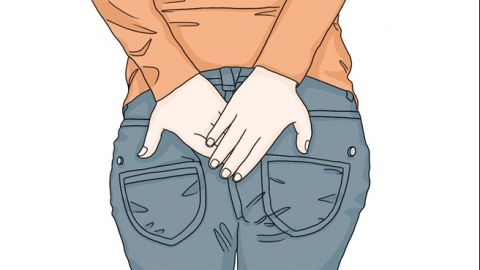What are the differences between anal fistula and hemorrhoids?
Generally speaking, the main differences between anal fistula and hemorrhoids include the bleeding condition, pain manifestation, lesion location, inducing factors, and effects on defecation. If discomfort symptoms occur, it is recommended to seek timely treatment at a regular hospital. Detailed analysis is as follows:
1. Bleeding Condition
Anal fistulas rarely involve bleeding; when it does occur, it is usually small amounts of blood-tinged purulent discharge or slight oozing when the fistula ulcerates. Hemorrhoidal bleeding is more common, typically bright red blood, manifesting as dripping blood, jet-like bleeding, or blood on toilet paper. The blood does not mix with the stool and usually appears during bowel movements.
2. Pain Manifestation
During the inactive phase, anal fistulas cause mild discomfort, mainly a feeling of heaviness in the anus. During acute episodes, due to infection and inflammation of the fistulous tract, significant pain occurs, intensifying as the inflammation worsens. Hemorrhoids generally do not cause pain, but severe pain may occur when internal hemorrhoids prolapse and become incarcerated or when a thrombosis develops in external hemorrhoids, causing sudden sharp pain in the anal area.

3. Lesion Location
An anal fistula consists of three components: an internal opening, fistulous tract, and external opening. The internal opening is usually located near the dentate line, the tract passes through the perianal tissue, and the external opening is located on the perianal skin. Hemorrhoids are venous clusters formed by congestion and dilation of the venous plexus beneath the mucosa of the lower rectum and anal skin. Internal hemorrhoids are located above the dentate line, while external hemorrhoids are located below it.
4. Inducing Factors
Anal fistulas are commonly formed after rupture of perianal abscesses and are closely related to anal gland infections. Poor hygiene habits and low immunity may also be contributing factors. Hemorrhoids are often caused by increased abdominal pressure, such as constipation, prolonged sitting or standing, pregnancy, and obesity, which lead to elevated pressure and tortuous dilation of the venous plexus.
5. Effects on Defecation
Patients with anal fistulas may experience some discomfort or pain during defecation, and the discharge from the fistula may soil underwear, causing inconvenience in daily life. Patients with hemorrhoids usually do not experience significant changes in bowel habits, although a feeling of incomplete evacuation may occur when internal hemorrhoids prolapse, and pain may cause fear of defecation.
In daily life, it is important to maintain perianal hygiene, avoid prolonged sitting, eat a balanced diet, and ensure smooth bowel movements to reduce the risk of anorectal diseases.





